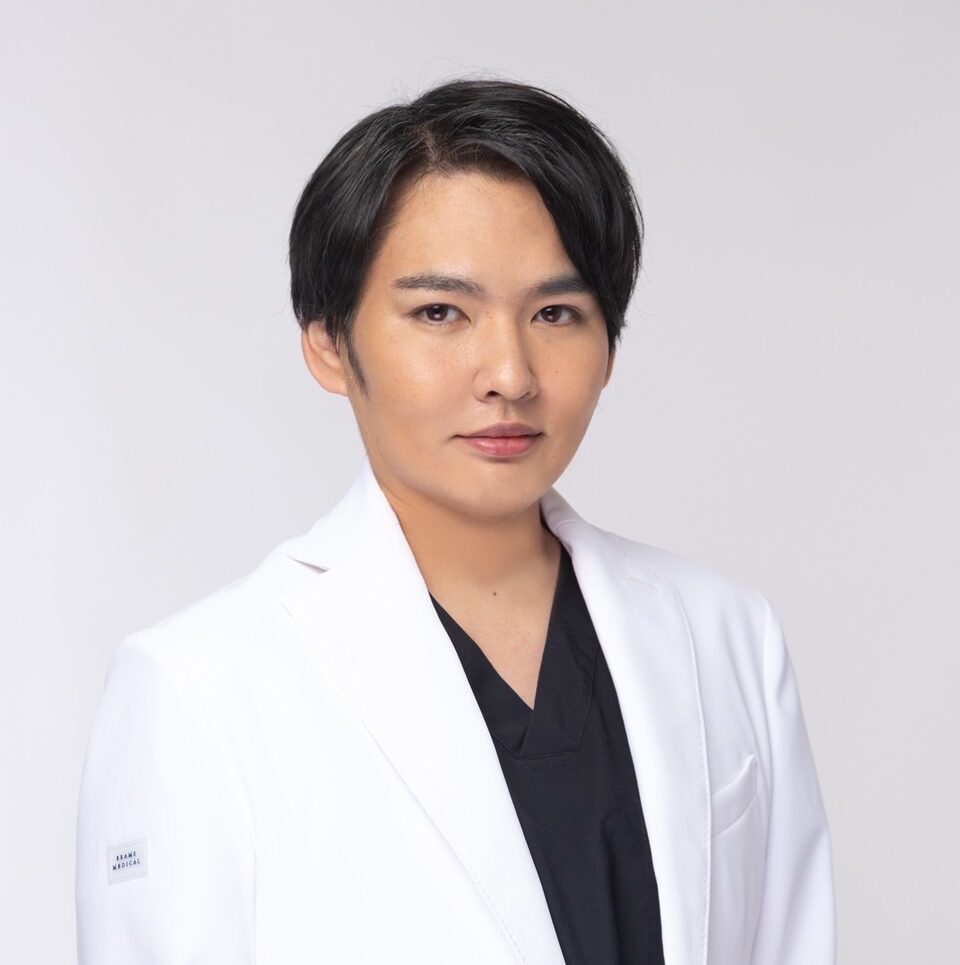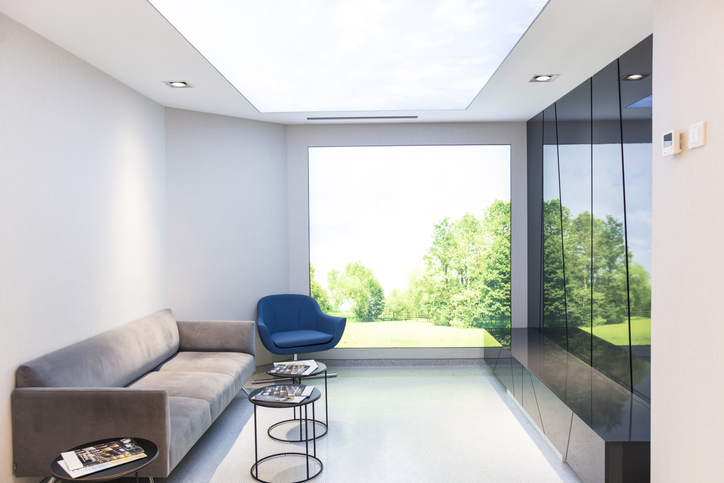Do you have such concerns? It is true that many people are concerned about the future effects of blepharoplasty because of its semi-permanent effect. However, changes in the eye area due to aging are a natural phenomenon that happens to everyone. What is important is to understand these changes correctly and to face cosmetic treatment from a long-term perspective.
Here, we explain the effects of craniotomy on aging based on medical evidence. We will share our specialized knowledge in an easy-to-understand manner, including the mechanism of skin and muscle changes with aging, changes over time in the incision site, and appropriate selection methods with an eye toward old age. We are sure that you will find the basis for your decision to achieve both "beauty now" and "naturalness in the future.

Graduated from the Faculty of Medicine, National Kumamoto University. After serving as the director of major beauty clinics in Japan, etc., he opened Aladdin Aesthetic Clinic in 2023. He is a professional in aesthetic medicine with a doctorate in anti-aging research and many years of experience. With the motto of "Toward the realization of cosmetic medicine without lies," he aims to be the "Only One" together with his patients.
What is an eyelid incision? Basic Knowledge and the Importance of Considering Aging
When considering a craniotomy, many people are probably wondering what will happen to them in old age. Although craniotomy is one of the most popular cosmetic treatments, its semi-permanent effect requires careful consideration of its impact on the future.
Here we will explain in detail from a medical perspective the basic mechanics of blepharoplasty and why it should be considered even in old age. With the right knowledge, you will be able to make the best choice for you.
Basic mechanics of the craniotomy
An incision is a surgical procedure to widen the width of the eye by removing the folds of skin inside the eye called the Mongolian folds (extra-ocular horn). By removing the Mongolian folds, which are found in many East Asians including the Japanese, the effect is to make the eyes appear larger and brighter.
There are three main surgical techniques, each with its own characteristics: the Z technique, in which a Z-shaped incision is made and the skin is replaced; the W technique, in which a W-shaped incision is made and a larger change is achieved, but the scar is somewhat more noticeable; and the W technique, in which the skin is replaced through a Z-shaped incision and the scar is less noticeable. The redrape incision is the most common. The redrape incision method aims for a natural-looking result with minimal incisions and has become increasingly popular in recent years.
What these surgeries have in common is that once removed, the tissue does not regenerate. In other words, the effects of blepharoplasty are semi-permanent. While the term "semi-permanent" has the attractive aspect of long-lasting cosmetic effects, it also means that the changes that come with aging will be with us for the rest of our lives.
Why should we consider "old age"?
The most important reason why old age should be considered in an eyelid incision is the irreversibility of the surgery. Once removed, the Mongolian folds cannot be completely restored to their original state, no matter how advanced the technology. It is possible to improve it to some extent with corrective surgery, but complete restoration is difficult.
Even more important is the fact that our faces invariably change as we age. Skin becomes thinner, muscles weaken, and fat diminishes or shifts. The eye area is an area where these changes are particularly noticeable, and a design that was ideal in our 20s may look unnatural in our 50s and 60s.
In aesthetic medicine, it is extremely important to have a long-term perspective rather than thinking "just for now. Especially with irreversible surgeries such as craniotomy, it is necessary to make decisions based on one's imagination of where one will be in 10 years, 20 years, and even beyond.
| date | Major changes around the eyes | Possible Impacts |
|---|---|---|
| one's twenties | Skin elasticity Muscles are well developed. . moderate fat. |
Scars are less noticeable. Easy to maintain a natural finish |
| thirties | Slightly reduced skin elasticity ・Fine lines around the eyes begin to appear. |
Almost no major problems. (more maintainable with proper care) |
| 40s | Skin thinning begins to be noticeable. Appearance of sagging eyelids |
Thinning of the skin at the incision site |
| 50s | Noticeable skin laxity Reduction of orbital fat |
The shape of the eye socket may be uncomfortable. (e.g., possible increased exposure of the lacrimal folds) |
| 60s and beyond | Overall skin thinning Significant loss of muscle strength |
Risk of unnatural impression due to the procedure (Makes it difficult to correct) |
This is only a possible effect, but as you can see, the condition of the eye area changes dramatically with age, and the appearance of the craniotomy changes accordingly. This is why, when considering surgery, a careful decision must be made with an eye toward future changes.
Learn about the natural changes around the eyes as we age.
In the previous chapter, I told you that since blepharoplasty is an irreversible surgery, it is important to make decisions with an eye toward old age. So how does our eye area actually change with age? In order to correctly envision our old age after undergoing a craniotomy, it is essential to first understand the natural changes that occur around the eyes as we age.
In this section, we will discuss in detail the aging process around the eyes, which occurs in everyone, based on medical mechanisms ranging from structural changes in the skin to changes in muscle and fat. With this knowledge, you should be able to more concretely imagine how an eyelid incision might affect you in the future.
Structural changes in the skin
The skin around the eyes is actually the most delicate part of the face. It is only about 0.5 mm thick, about 1/3 the thickness of the skin around the cheeks. Because of this thinness, it is the first to show changes due to aging.
Two proteins in the dermis layer, collagen and elastin, are the main players in keeping the skin youthful. Collagen maintains skin strength, while elastin is responsible for elasticity. Unfortunately, however, these proteins gradually decrease after peaking in the 20s. Collagen decreases by about 1% per year, and by the time you reach your 50s, it is reduced to about half of what it was in your 20s. Elastin is rarely renewed after adulthood.
In addition, photoaging caused by ultraviolet light also has a significant impact on the skin around the eyes. UV rays reach the dermis layer and promote the production of enzymes that destroy collagen and elastin. The area around the eyes is also an area where it is easy to forget to apply sunscreen, and UV damage accumulates unintentionally.
These changes cause the skin around the eyes to become thinner and more brittle. The area that has undergone a craniotomy is no exception; rather, the scar tissue from the surgery is more susceptible to ultraviolet radiation than normal skin, and therefore requires more attention.
Muscle and fat changes
The orbicularis oculi muscle, which surrounds the eyes, is an important muscle for blinking and facial expressions. However, like other muscles, the orbicularis oculus muscle declines in strength as it ages, and the muscle itself becomes thinner; in people in their 40s and beyond, this muscle weakness becomes visible, causing the eyelids to feel heavier and making it difficult to open the eyes wide.
Fat around the eyes, called orbital fat, also changes significantly with age. The fat that served as a cushion to protect the eyeballs when we were young shifts downward under the influence of gravity or is partially reduced. This causes dark circles and sagging under the eyes, while the upper eyelids appear hollow.
| Factors of Change | Young age (20s-30s) | Middle age (40s-50s) | Older age (60s and beyond) |
|---|---|---|---|
| Skin elasticity | Rich in collagen and elastin for firmness | Gradual decrease and fine lines begin to appear. | Significantly reduced, deep wrinkles and sagging are evident |
| orbicularis oculi muscle | Sufficient muscle strength to open the eyes. | Muscle weakness begins, eyelids feel heavy | Thinner muscles and increased risk of droopy eyelids |
| orbital fat | Protects the eye in the proper position | Downward movement begins. | Noticeable sagging under the eyes due to migration and reduction |
The combined effect of these changes causes the skin to sag. The skin itself becomes thinner, the muscles that support it weaken, and the position of fat changes, causing the skin to sag because it can no longer resist gravity. The area that has undergone a craniotomy cannot avoid this natural aging effect.
Of particular note is how these aging changes can change the appearance of the new eye shape created by the craniotomy. Incision lines that looked natural in youth may become unnaturally prominent as the skin thins and the surrounding tissue sags. This is why it is important to fully understand these future changes and make a choice with an eye toward old age when considering a craniotomy.
How do craniotomy incisions affect old age?
In the previous chapter, we looked in detail at the natural aging process around the eyes that occurs in everyone. Skin thinning, muscle wasting, and fat migration are some of the changes that cannot be avoided. So how do these changes affect the area undergoing blepharoplasty?
What will happen to me in my old age if I have a craniotomy?" I will answer these concerns based on medical evidence. We will also explain in detail how the eye socket area will change when tissue changes due to surgery and aging combine, as well as some of the concerns that are often asked.
Aging of incision site
How does the area that has undergone a craniotomy change over time? The first thing to understand is the nature of the scar tissue created by the surgery.
Scar tissue, simply put, is "scar tissue," but it has a different structure than normal skin tissue. In contrast to normal skin, where collagen fibers are arranged in a regular pattern, scar tissue has collagen arranged in an irregular pattern. Immediately after surgery, there is redness and firmness, but it usually matures and becomes less noticeable over a period of 6 months to 1 year. However, this scar tissue is also affected by aging and may show unexpected changes over time.
A particular problem is the effect of skin thinning. As mentioned in the previous chapter, the skin around the eyes thins with age.
Not only does the normal skin thin, but the scar tissue changes as well, and scars that were not noticeable in youth may gradually become more prominent in the 50s and 60s. This is because the surrounding skin becomes thinner, making the difference in texture between the scar tissue and the normal skin more noticeable.
Another important factor is the change in the exposure of the lachrymal folds. The lachrymal folds are the pink fleshy areas at the top of the eyes, and the lacrimal incision increases the exposure of these areas.
While moderate exposure may look attractive in youth, as the entire eye area sags and the skin thins with age, the tear ducts may appear excessively exposed. This can cause the eye area to appear unnaturally red and prominent.
Common retirement concerns and realities
One of the most common concerns we hear from people considering craniotomy is that the scar will be noticeable. This concern is by no means unfounded. In fact, as the skin thins with age, scars that were not noticeable in youth may appear more prominent.
However, this depends largely on the surgical technique and the skill of the physician. For example, if a less noticeable scarring technique such as the Z or redrape method is selected and careful suturing is performed by an experienced doctor, in many cases the scar will be barely noticeable even after aging. On the other hand, if an excessively large incision is made or if the suturing is poorly done, the risk of a noticeable scar increases with age.
The next most common concern is that it will look unnatural. This is especially true for those who chose larger incisions in their younger years to follow fashion trends; large eyes that looked attractive in their 20s may look unbalanced and unnatural in their 60s as their entire face sags and the impression of the eye area changes.
To prevent this risk, it is important to choose a modest design from the outset. Careful decisions must be made with an eye toward future changes, resisting the temptation to "go a little bigger."
Regarding revision surgery, there is a method called the Furukawa method. This is a surgical procedure to restore an excessively incised eye lid to a near original state, but it is impossible to completely restore it to its original state. In addition, corrective surgery with thinning skin due to aging is technically very difficult and often yields unsatisfactory results.
How to choose a craniotomy for old age!
We have looked in detail at the possible effects of craniotomy on aging from a medical perspective. Changes in scarring, changes in appearance due to thinning of the skin, and difficulty in correcting the problem. Knowing these facts, some of you may have felt uneasy.
However, with the right choices, it is quite possible to have a regret-free outcome in old age. The key is to make a wise decision that balances the "ideal now" with "naturalness in the future. Here, we will give you practical advice on specific design concepts and points to consider when choosing a doctor in order to achieve an eye incision that you will be satisfied with even in old age.
Importance of proper design
The most important factor in an eyelid incision is actually not how far to cut, but rather where to stop. Many people tend to think, "If I'm going to go to the trouble of surgery, I want to get a good result," but if you are looking ahead to old age, a modest incision is the wisest choice.
Why is a modest incision recommended? The reason is that, considering the changes that occur with age, what is "just right" in youth is likely to become "too much" in the future. large eyes that looked ideal in one's 20s may become unnaturally prominent in one's 50s or 60s as the overall balance of the face changes. With a modest incision, it is easy to maintain a natural look despite changes due to aging, and "elegant eyes even as one ages" can be maintained.
It is also extremely important to consider the balance of the entire face. The craniotomy is not just a matter of the eyes. The face is one harmonious whole, and the eyes, nose, mouth, and contours all affect each other. Even if the plump cheeks and lips are in balance with the large eyes when the patient is young, if the cheeks become hollow and the lips thin with age, only the eyes may appear unnaturally large.
- Predicting future changes based not only on current facial features, but also on the faces of parents and grandparents.
- Evaluate the ease of sagging based on skin thickness and texture.
- Predicting future wrinkle development based on the habit of using facial muscles
- Consider the rate of aging due to lifestyle (UV exposure, smoking, etc.)
The secret to a satisfactory craniotomy even in old age is to make a comprehensive judgment of these factors and select a design that "looks natural even 10 or 20 years later.
Points to consider when choosing a doctor
It is no exaggeration to say that the choice of doctor determines 80% of the success in a bunion incision for old age. It is especially important to choose a plastic surgeon with an extensive case history.
Plastic surgeons have not only cosmetic knowledge, but also in-depth medical knowledge of tissue healing processes, age-related changes, and scar formation mechanisms. In addition, they are familiar with facial anatomy and know how nerves and blood vessels run, which allows them to provide safe and natural-looking results.
It is also important to choose a doctor who can explain the long-term process. Doctors who only say sweet things like, "You will have your ideal eyes in no time" or "There will be no scars at all" should be avoided. A trustworthy doctor will honestly explain the positive and negative aspects of the procedure, including the changes that will occur in 5 years, 10 years, and even beyond. Choose a doctor who shows you case photos not only immediately after the surgery, but also after several years have passed.
During the counseling session, be sure to review the following questions
- Given the thickness and quality of my skin, what changes can I expect to see in the future?"
- What are your thoughts on how you see things 10 or 20 years from now?"
- What steps are you taking to minimize the changes that come with aging?"
- What options do I have if I ever need a revision in the future?"
- Is there anything I can do to slow down the aging process in my post-op care?"
A craniotomy for aging eyes is not about temporary beauty, but about lifelong satisfaction. For this reason, it is essential to choose a modest, natural design and to have the surgery performed by a trusted specialist.
summary
The relationship between blepharoplasty and aging has been discussed in detail from a medical perspective. Changes in the eye area due to aging are inevitable, but understanding this and making the right choices can lead to satisfactory long-term results.
The key is to carefully consider the balance between "ideal now" and "natural in the future. Discreet design, experienced physician selection, and the best choice for your age will help you make a decision you will not regret.
Because an episiotomy is an irreversible surgery, it is important to take the time to consider it and not rush into it. Also, surgery is not necessarily the only option. There are alternatives such as makeup and hyaluronic acid injections that have less risk of aging. First, consult with a trusted specialist and together you can find the best method for your situation. You will surely find a way to fulfill both your desire for beauty and security for the future.
At Aladdin Aesthetic Clinic, based on our many years of experience in cosmetic medicine and cosmetic dermatology and the knowledge of our doctoral degree, we provide counseling that aims to be "only one", offering the best treatment for each person we meet. We offer only the necessary treatments without any unnecessary information or suggestions.
Feel free to use our official LINE account for 24-hour counseling and reservations. Please feel free to contact us for free counseling for the first time or if you have any concerns.






